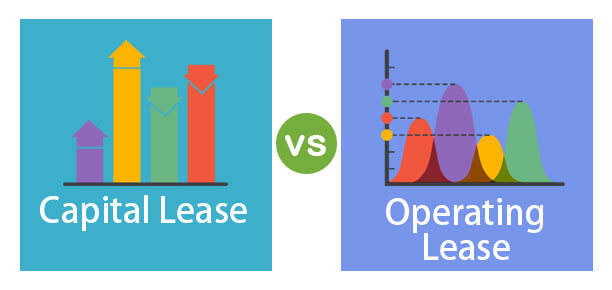An agreement that allows you to use a particular asset or equipment for a certain period. These agreements can be of several types, mainly operating lease and capital lease; both have their own attributes and differences.
We have made a comprehensive guide for you about both:
Table of Contents
Understanding The Capital Lease
A capital lease is a long-term, noncancellable agreement where, lesser that is, the owner of the equipment transfers the ownership to the buyer on lease for a certain period. These agreements are mainly prepared when a buyer has no liquidity or money to purchase the equipment. Therefore, they either choose to borrow or lease assets. Here equipment serves as an asset. However, this type of equipment lease can be considered debt since ownership of assets is passed only after completion of the lease period. For example, several companies obtain assets such as lands, buildings, aircraft, ships or heavy machinery, earth moving equipment, etc., on equipment lease. Although a capital lease is a rental agreement, it is written as an asset-based on certain criteria under GAAP standards. Capital leases impact on a company’s assets, liabilities, depreciation expense, influencing interest expense.
A Lease Contract Must Have The Following Conditions To Term As A Capital Lease:
- Life of equipment lease must be larger than assets practical life
- Ownership must be transferred to the lessee at the end of the lease period.
Pros Of Capital Lease
- The buyer, called the lessee, can obtain assets after contract termination at a reduced rate than the market price.
- The lessee can show assets on the balance sheet and claim depreciation. This type of structure reduces the taxable income of the company.
- Help you reduce the risk of obsolescence.
Cons Of Capital Lease
- The lessee had to bear the cost of maintenance during the equipment lease Hence, your expenses are increased over debt.
- Obsolescence risk: the lessor reduces their own risk of an obsolete part or entire asset. Thus, the lessee has to bear that risk.
Understanding The Operating Lease
Operating leases, in simple words, can be described as an agreement between the owner of asset or equipment and the user, where the owner allows the use of equipment for a certain period without transferring the ownership rights.
Pros Of Operating Lease
- They provide resilience: Operating leases of assets are more flexible because they can be updated more frequently per company requirements.
- Since there is no involvement of ownership transfer, the buyer or lessee is exempted from the risk of out-of-date assets.
Cons Of Operating Lease
- The company has to endure extra expenses during the equipment lease
- No ownership: Lack of ownership involved in operating lease makes it difficult or impossible for owners to make decisions about the sale of assets.
- Operating leases lack continuity due to temporary and short-term agreements between lessor and less. The company has to weigh the lease options regularly to prevent any issues.
Capital Lease Vs Operating Lease
A capital lease, also described as a finance lease, is considered an asset in the company’s balance sheet, while on the other hand, operating leases are evaluated as an expense, so it’s off the balance sheet. A capital lease is more of buying or owning a piece of property; in contrast operating lease is evaluated as renting out a property. Significant capital lease vs operating lease can be seen in their accounting treatment, respectively.
Operating leasing of assets is used for the short term and is similar to renting a property. There is no involvement in transferring ownership between one party called the lessor and the buyer called the lessee. However, periodic lease payments are expensed in the income statement and managed as operating expenses, thus impacting both net income and operating expenses. In contrast, the capital lease is more like owning property and used for long-term equipment leasing.
Accounting Treatment Of Capital Lease And Operating Lease
For an operating lease, the accounting treatment is simple and clear to understand. As mentioned, periodic equipment leasing payments are considered operating expenses and added as expenses in the income statement. Hence, they are not used on the balance sheet, and the company cannot charge depreciation on operating leases assets.
On the other hand, a capital lease is managed as debt or loan due to the transfer of ownership between two parties. Thus, the interest payments of the capital lease are managed as an expense in the income statement. Unlike operating leases, their current market value is included on the balance sheet under the asset side, and the company has the right to charge depreciation of assets. Also, as it’s considered debt, the loan amount is included in the liability side of the balance sheet.
Generally, operating leases identify expenses little later than a capital lease.
Bottom line: Companies use both capital lease and operating lease depending upon their requirements. Considering their accounting treatments and tax influence on net income, companies often use either them or a combination of both. Capital lease and operating lease have their own set of pros and cons. Organizations weigh both options and decide which one they want.






More Stories
Why is an Affidavit So Important?
Atom Trike Folding – A Review
Use String_AGG to query with condition in SQL?